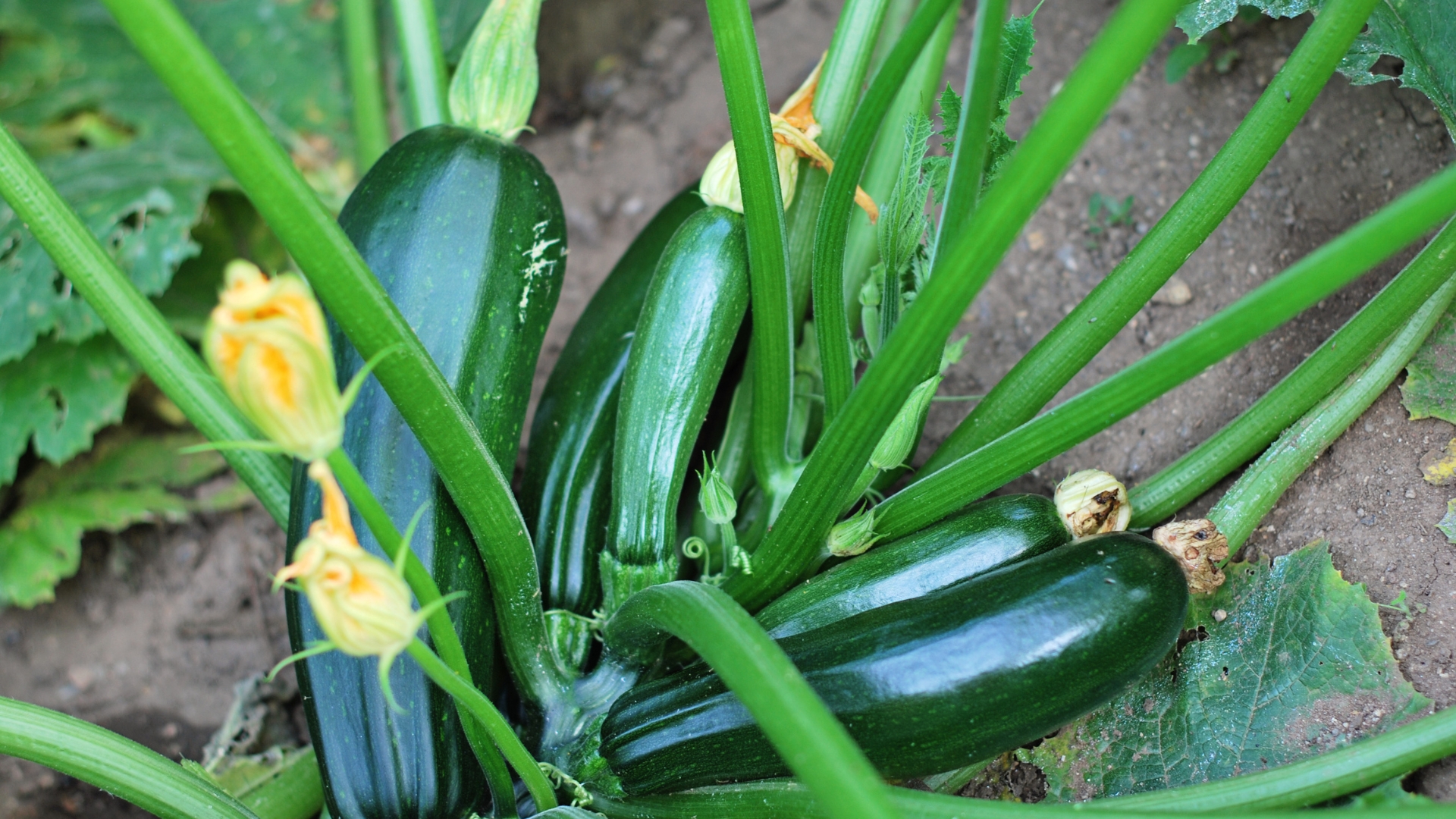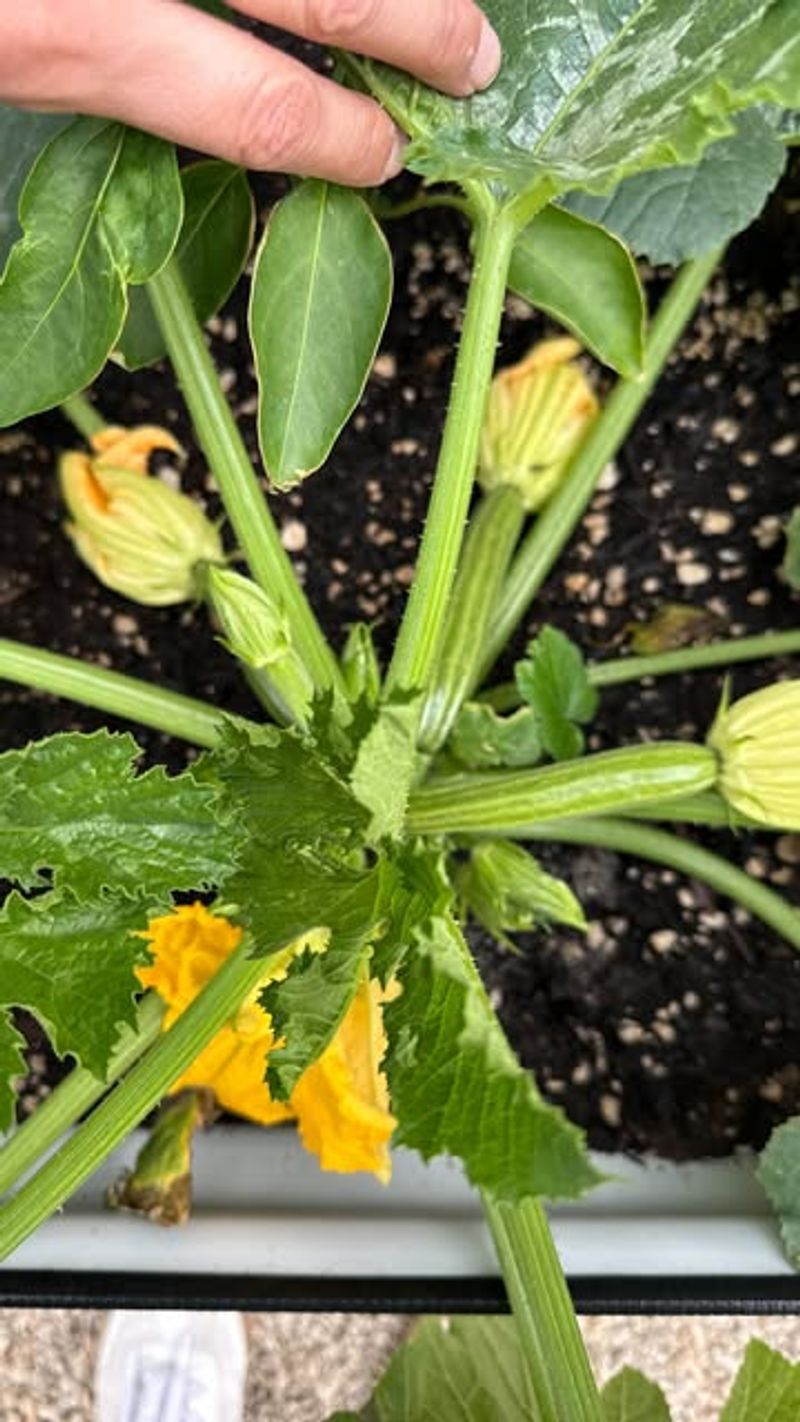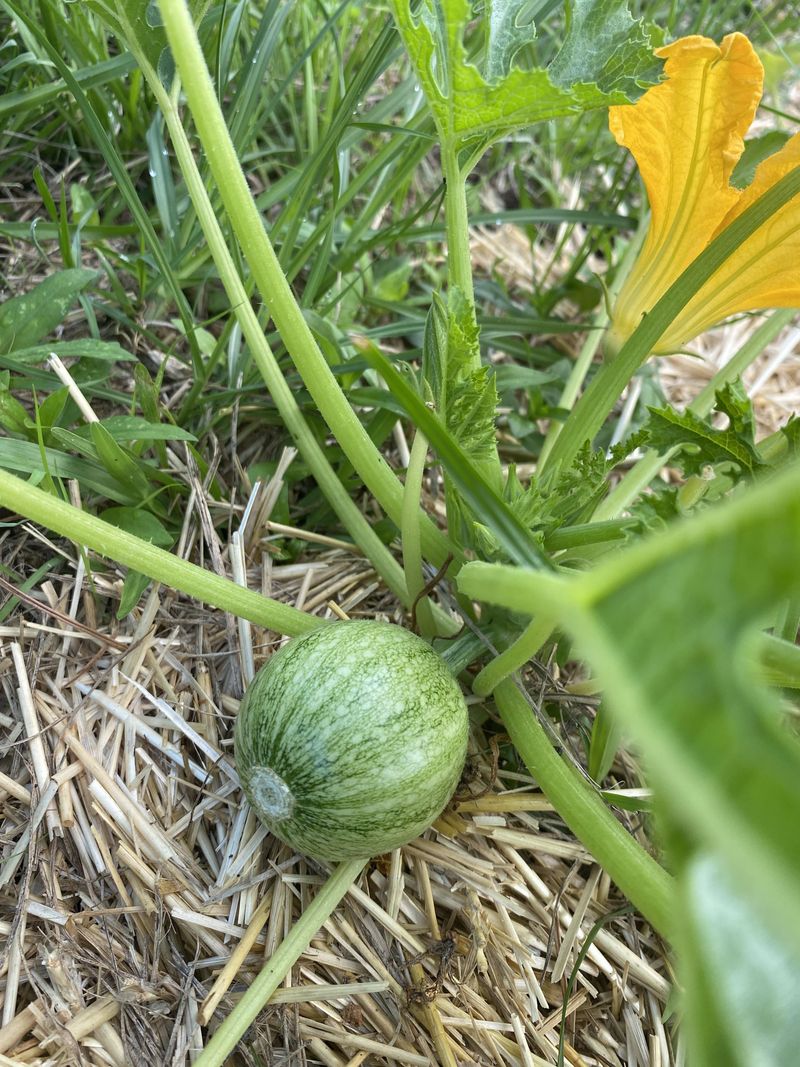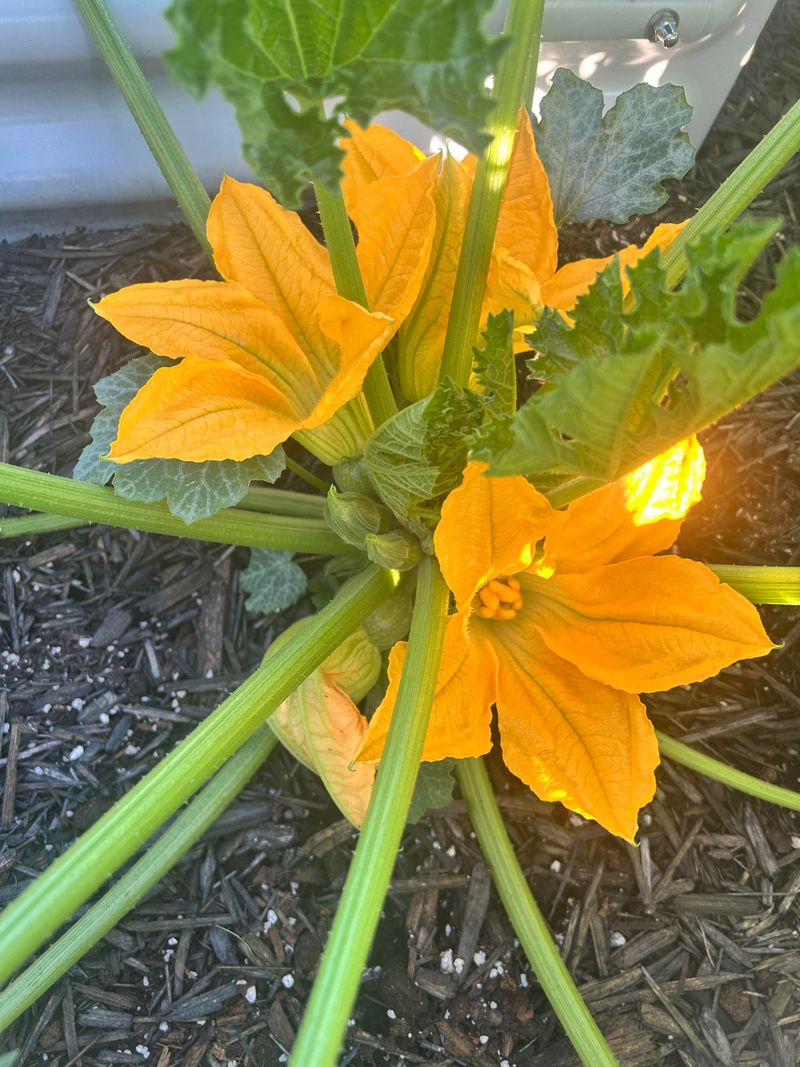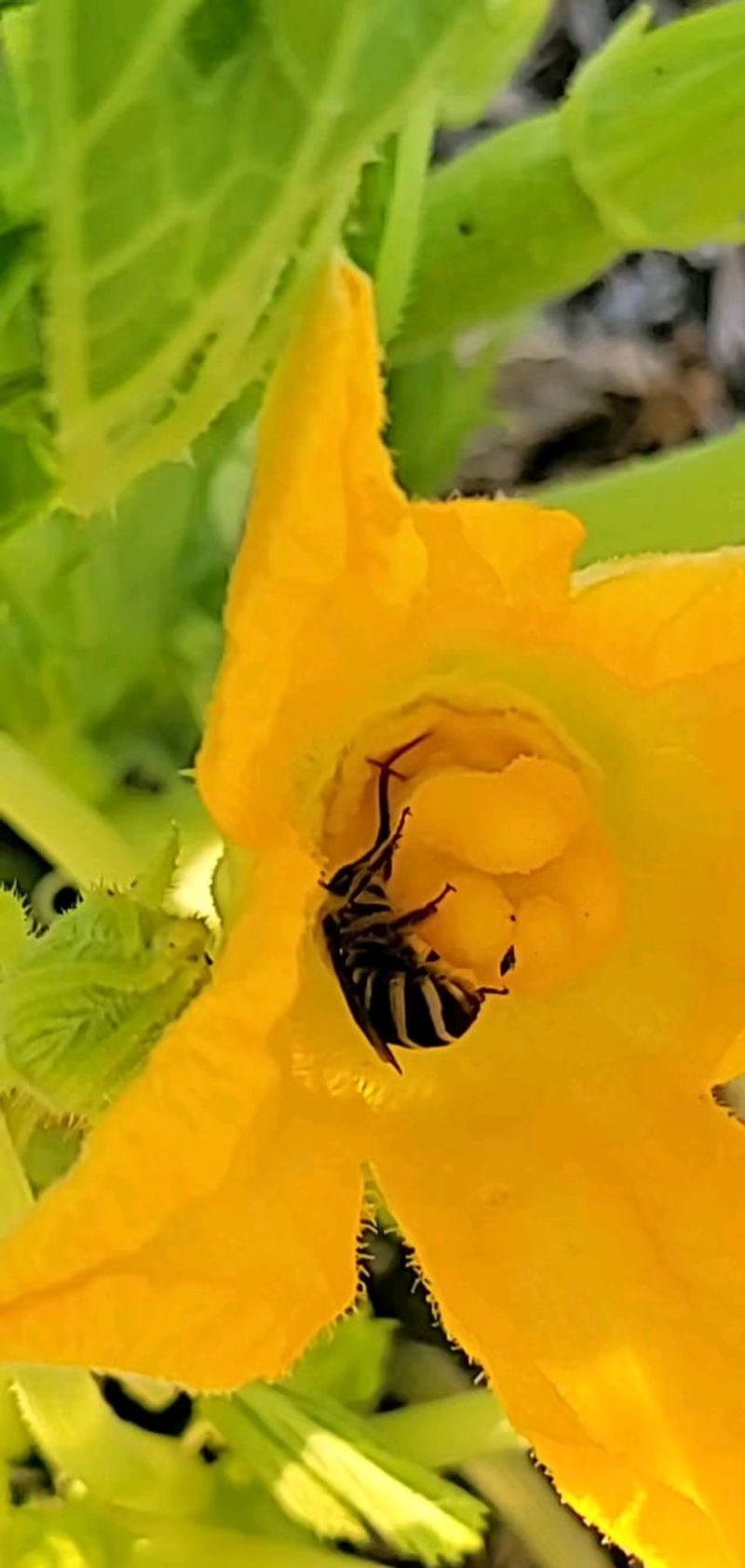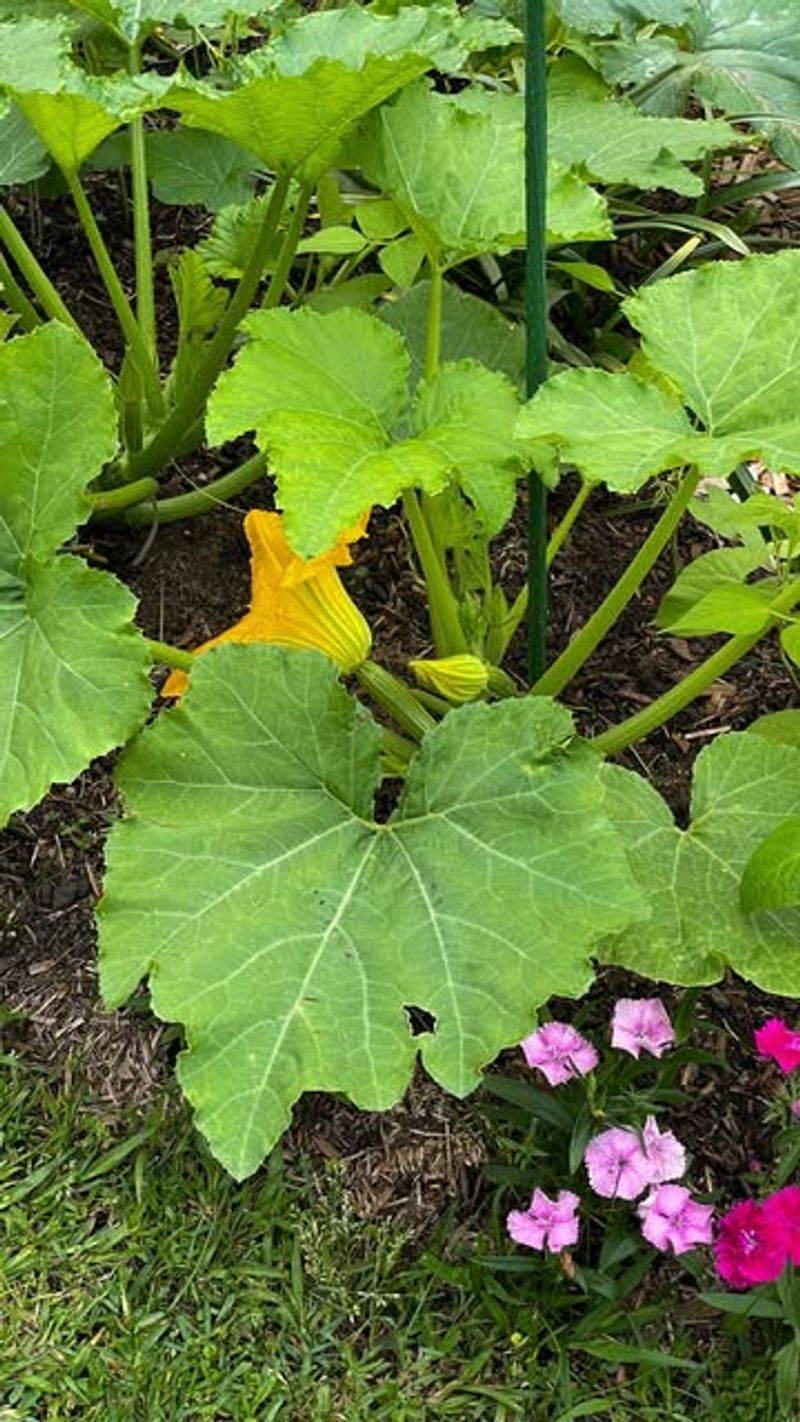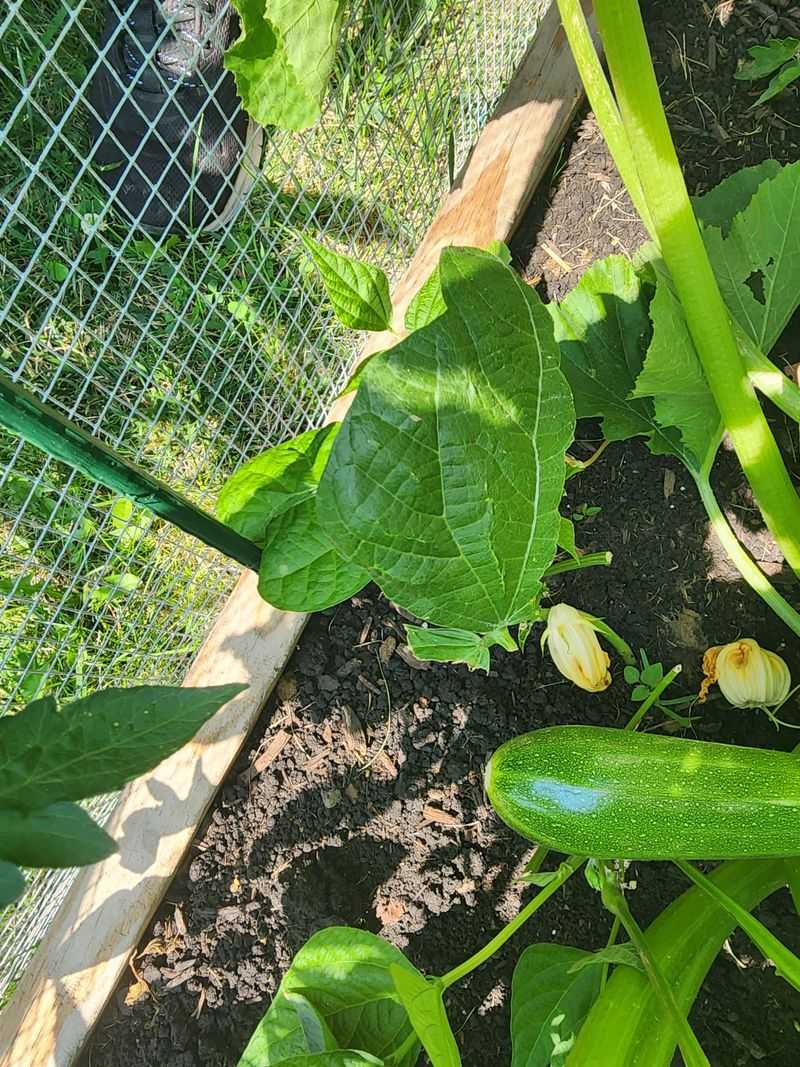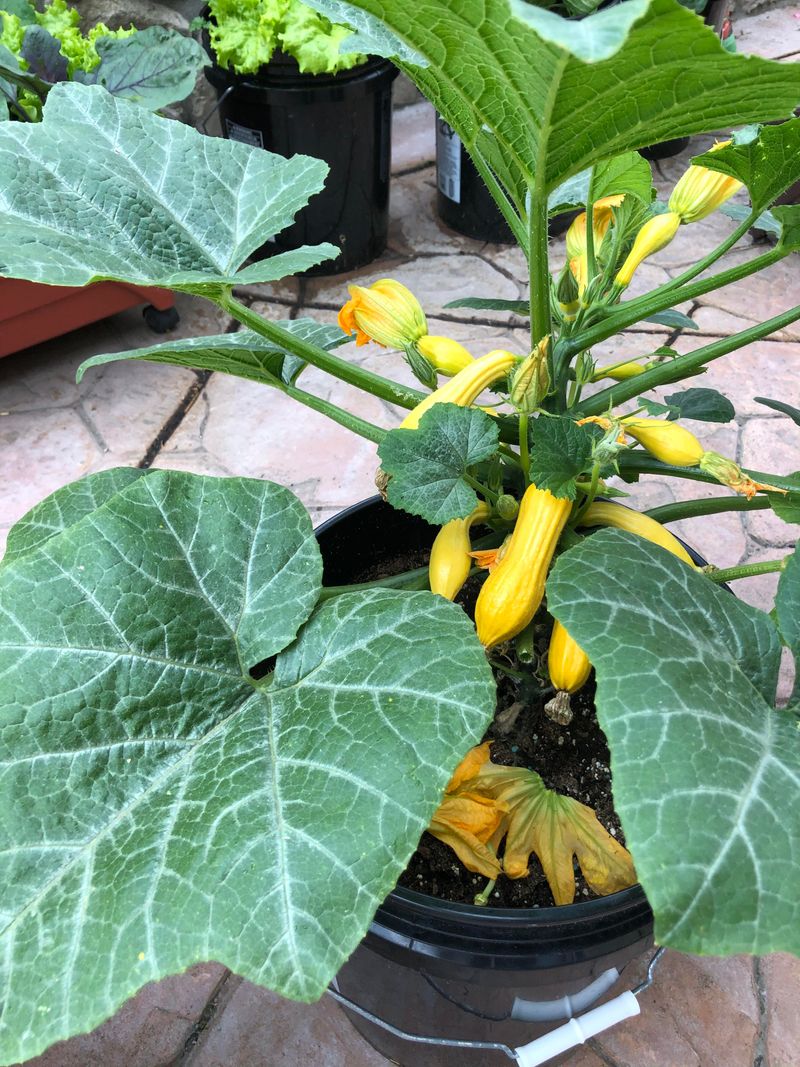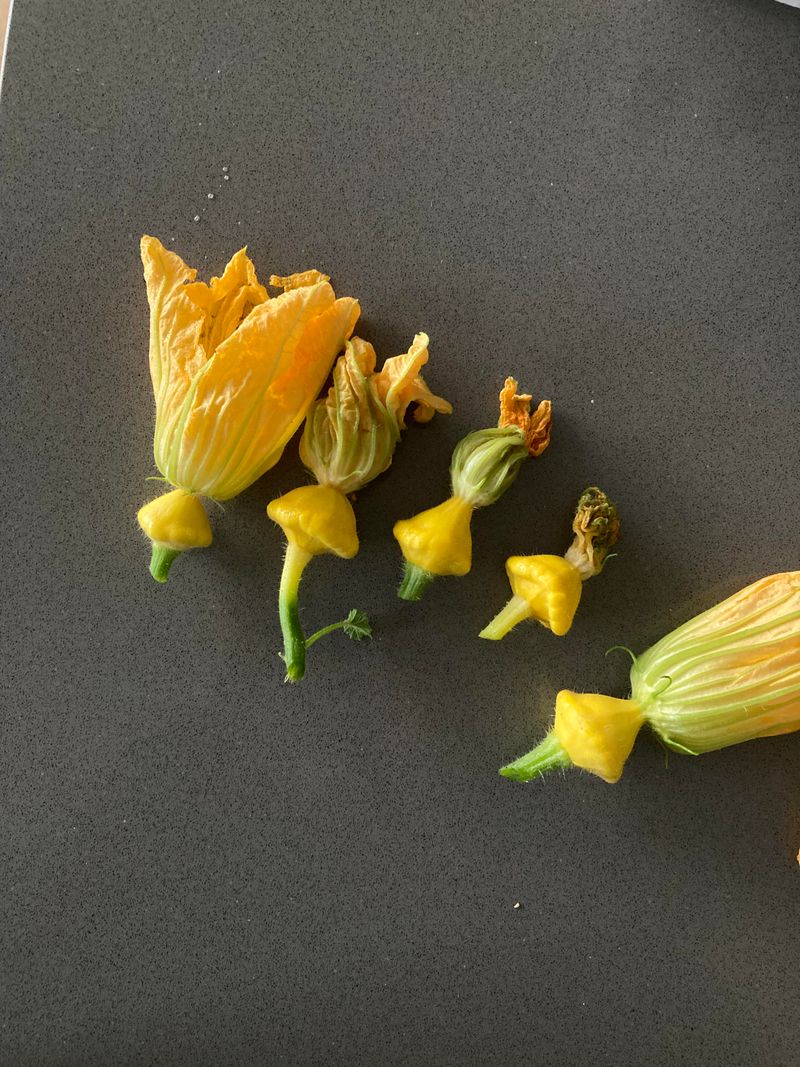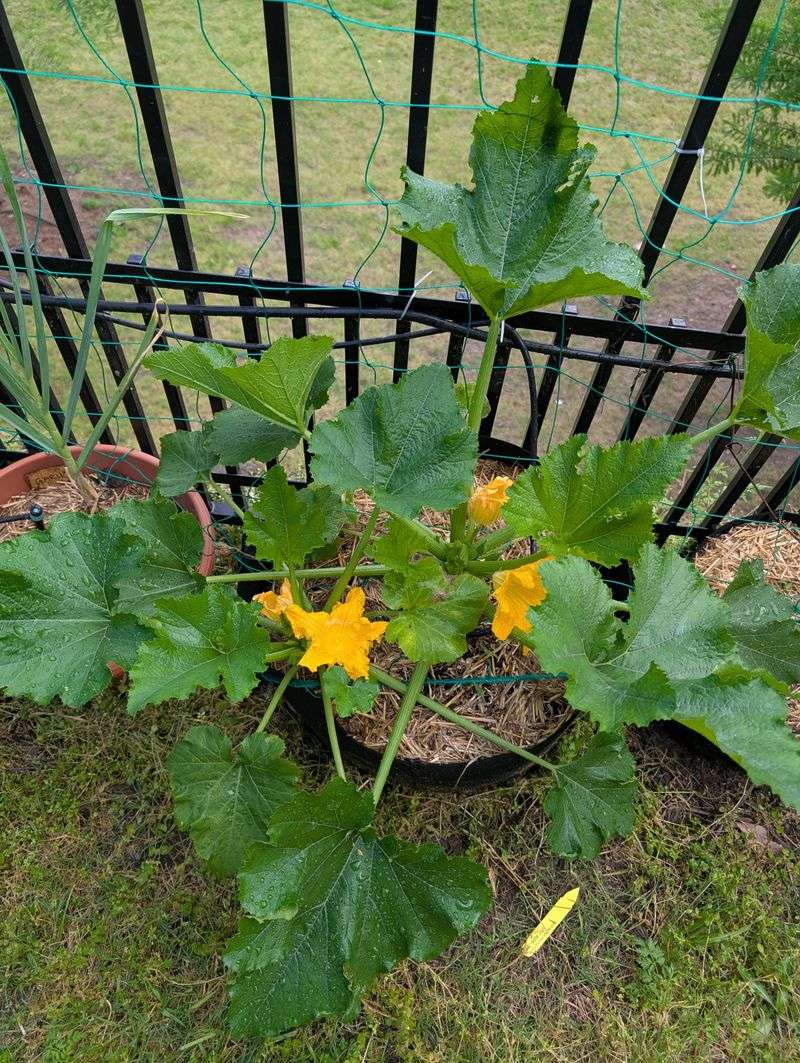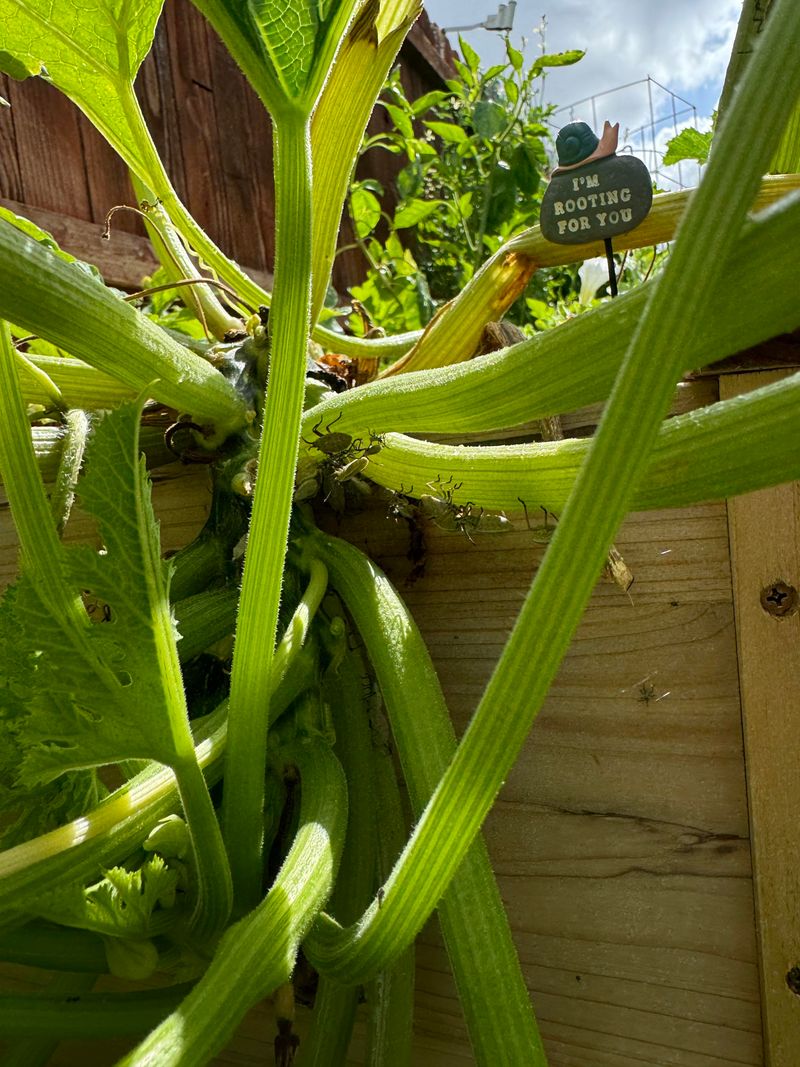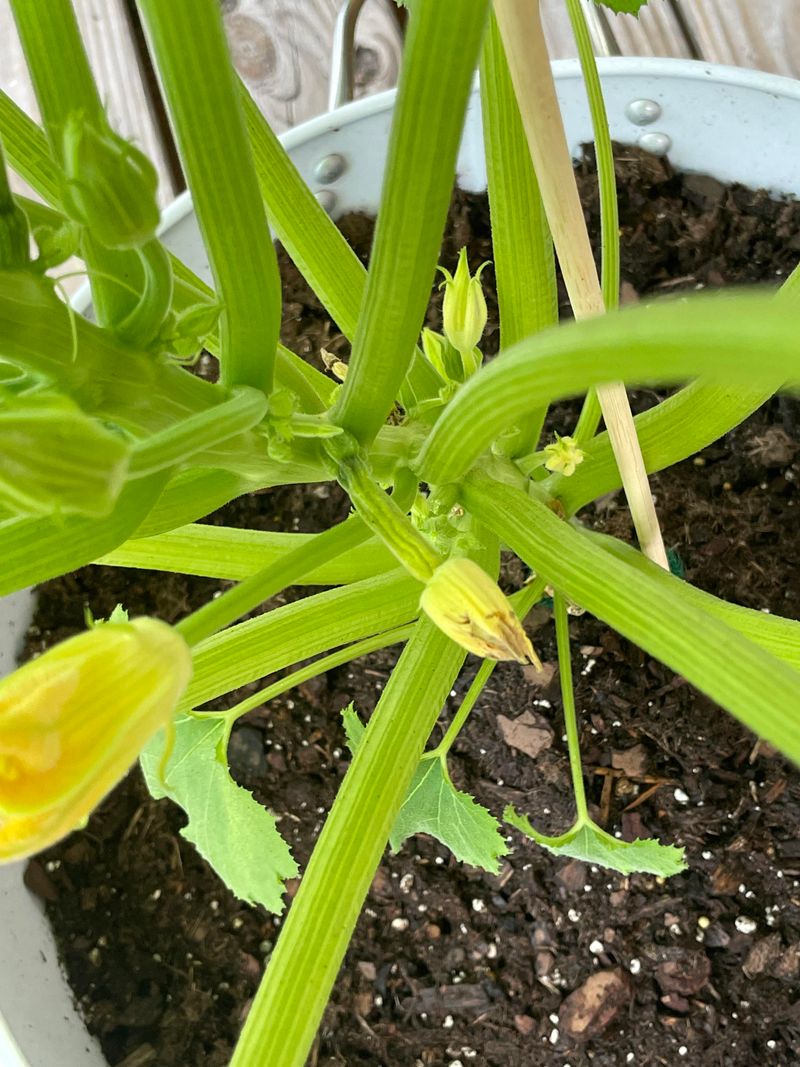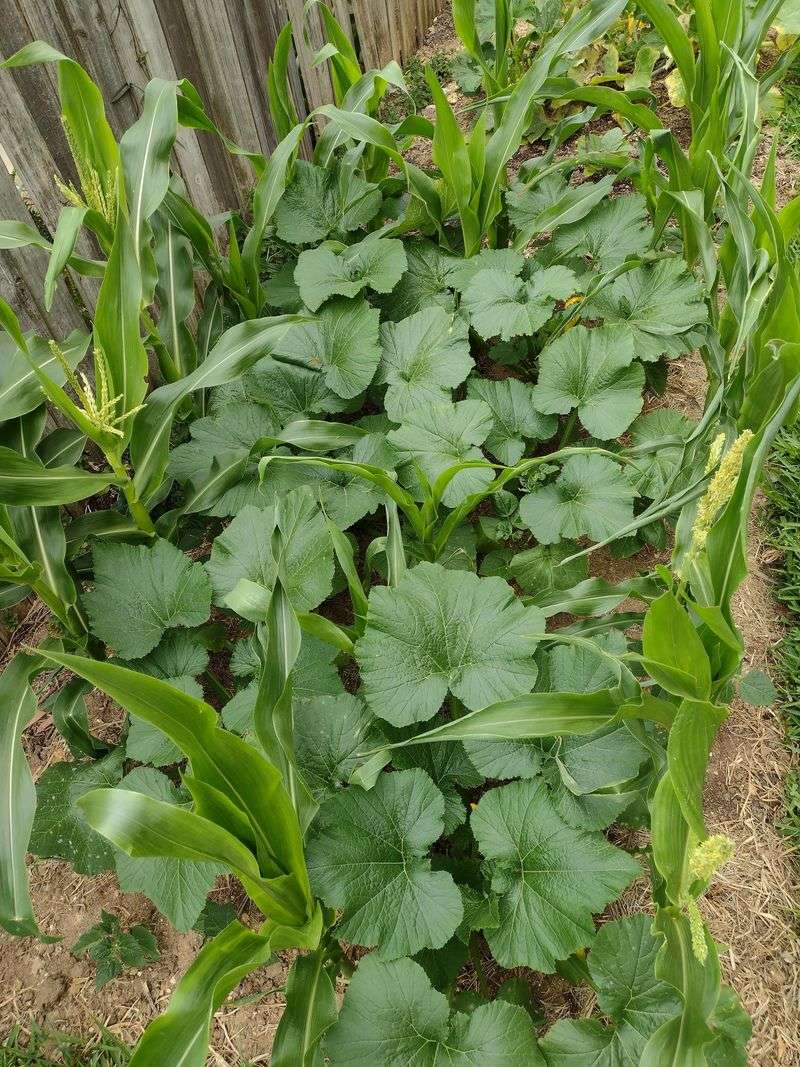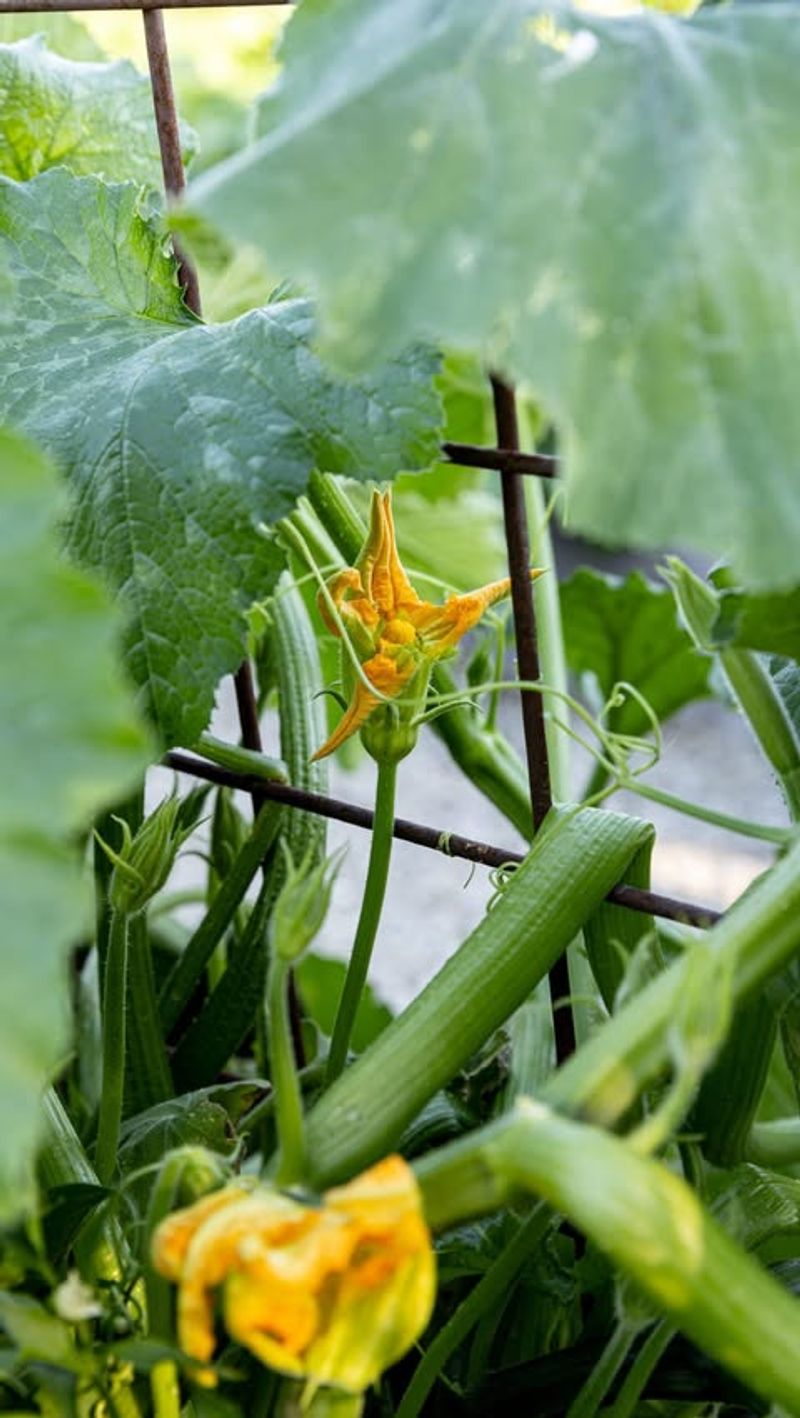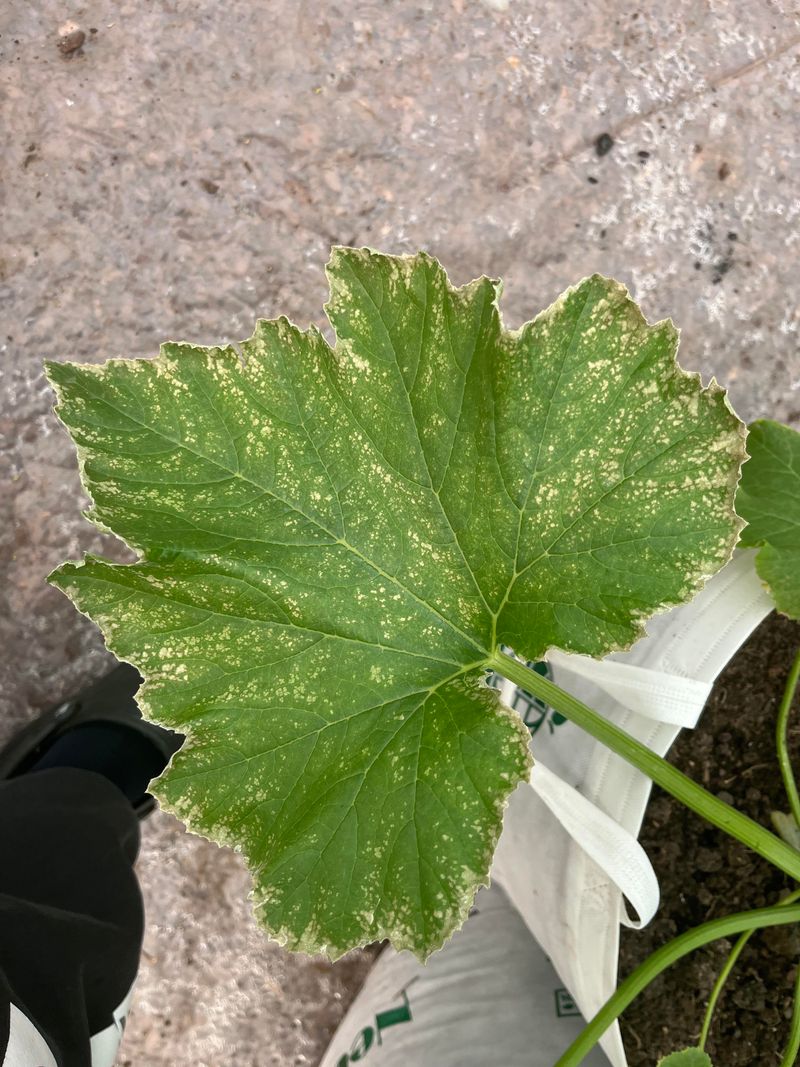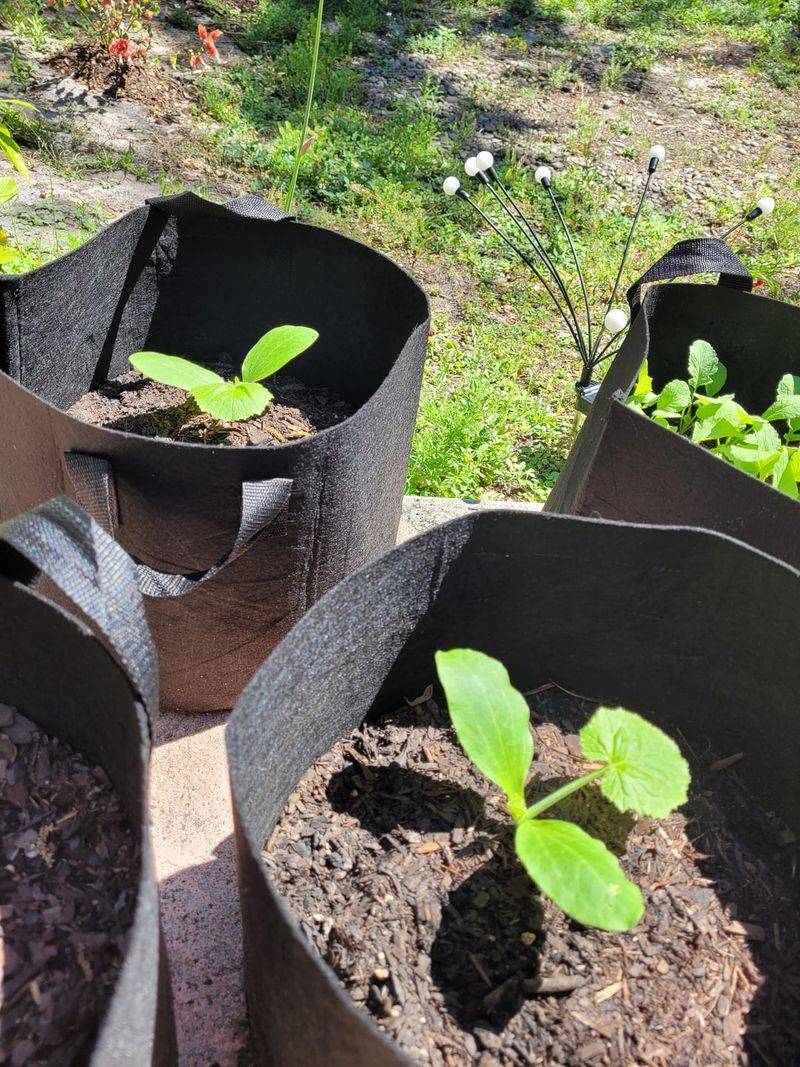Pollination can make or break your zucchini harvest, but it’s easier to manage than you might think. I’ve learned a few tricks that helped my plants set fruit without any guesswork.
These 15 tips will guide you through getting the right pollination and figuring out just how many plants you actually need. With a little know-how, your zucchini patch will be buzzing and bursting with produce.
Let’s get those flowers working for you!
1. Plant Male and Female Flowers
Your zucchini plants produce both male and female flowers, but they look different! Male flowers have thin stems, while females have tiny zucchini-shaped swellings at their base. Without both types present and open at the same time, pollination can’t happen.
For a small garden, plant at least 2-3 zucchini plants to ensure overlap in flowering times. This increases your chances of having male and female flowers open simultaneously, creating more opportunities for successful pollination.
2. Hand Pollination Techniques
Grab a small artist’s paintbrush or cotton swab early in the morning when flowers are fully open. Gently swirl it inside a male flower to collect pollen, then transfer it to the center of female flowers. The yellow dusty stuff is what you’re after!
Repeat this process with several male flowers to ensure thorough pollination. Most gardeners find that hand-pollinating every other day during flowering season dramatically increases their zucchini yield, especially when natural pollinators are scarce.
3. Morning Pollination Timing
Zucchini flowers typically open for just a few hours in the morning and close by afternoon. Get out there early – between 6-10am is ideal when the flowers are wide open and receptive. Missing this window means waiting another day for your chance.
Flowers are most receptive on warm, sunny mornings rather than cool or rainy days. Setting a morning reminder on your phone during flowering season can help you remember to check your plants during this critical pollination window.
4. Attract Natural Pollinators
Bees are your best friends for zucchini pollination! Plant bee-friendly flowers like lavender, borage, or sunflowers nearby to attract these helpful insects. Having diverse flowering plants ensures bees visit your garden regularly and stop by your zucchini plants.
Consider adding a shallow water dish with stones for bees to rest on while drinking. Avoiding pesticides during flowering time also keeps pollinators safe and active in your garden, significantly increasing natural pollination rates.
5. Proper Plant Spacing
Give your zucchini plants room to breathe! Crowded plants often have poor air circulation, making it harder for pollinators to access flowers. Space plants at least 3-4 feet apart in all directions to allow plenty of room for growth.
Good spacing also reduces disease pressure and makes hand-pollination easier for you. Many gardeners underestimate how large zucchini plants become, so mark out proper spacing before planting to ensure optimal growing conditions for successful flowering and pollination.
6. Ideal Growing Conditions
Zucchini plants need full sun (at least 6-8 hours daily) and consistent moisture to produce healthy flowers. Stressed plants often drop flowers before pollination can occur or produce fewer male flowers needed for pollination.
Amend soil with compost before planting and mulch around plants to retain moisture. Regular deep watering at the soil level (not on leaves) encourages strong plant growth and abundant flowering, creating more opportunities for successful pollination.
7. Fertilization Balance
Too much nitrogen fertilizer produces lush leaves but fewer flowers, creating a pollination problem. Focus on balanced fertilizers or those slightly higher in phosphorus (the middle number in fertilizer ratios) to encourage flowering.
Apply compost tea or a light organic fertilizer every 3-4 weeks during the growing season. Many gardeners find that switching to a bloom-boosting fertilizer when plants start flowering significantly increases the number of flowers available for pollination.
8. Recognize Pollination Success
Learn to spot the signs of successful pollination! A properly pollinated female flower’s tiny fruit will begin swelling within 1-2 days. Unpollinated female flowers yellow at the base, shrivel, and drop off without developing.
Keep a garden journal noting when flowers open and whether fruits develop. This helps identify patterns in your garden’s pollination success. Taking before-and-after photos of female flowers can also help you learn to recognize the visual cues of successful versus failed pollination.
9. Optimal Planting Quantity
For a family of four, 2-4 zucchini plants typically provide plenty of harvest. Each healthy plant can produce 6-10 pounds of zucchini over the season! Planting too many often leads to overwhelming abundance and wasted vegetables.
Consider staggered planting dates 2-3 weeks apart for continuous harvest rather than planting more plants at once. This approach extends your harvest season and ensures you’ll have plants in different growth stages, improving your chances of successful pollination throughout summer.
10. Weather Considerations
Extreme heat (above 90°F) or cool temperatures (below 60°F) can affect pollen viability and flower production. During heat waves, provide afternoon shade to protect flowers and improve pollination success rates.
In cooler climates, consider using row covers at night to maintain warmth around plants. Many gardeners find that creating microclimates with strategic placement of heat-absorbing rocks or water features near zucchini plants helps maintain ideal temperatures for pollination.
11. Water Management
Consistent soil moisture helps zucchini plants produce and maintain healthy flowers. Water deeply at the base of plants early in the morning, avoiding wetting the flowers which can wash away pollen or make it sticky and ineffective.
Consider drip irrigation or soaker hoses to deliver water directly to the soil. Many experienced gardeners mulch with straw or compost around zucchini plants to maintain even soil moisture, creating better conditions for flower production and successful pollination.
12. Companion Planting Strategies
Nasturtiums, borage, and marigolds planted near zucchini attract beneficial insects while repelling harmful ones. These companion plants create a pollinator-friendly ecosystem that improves your zucchini’s chances of successful fruit development.
Avoid planting potatoes nearby, as they can inhibit zucchini growth. Many gardeners report that interplanting herbs like dill and basil among zucchini rows not only attracts diverse beneficial insects but also seems to improve the flavor of harvested zucchini.
13. Extending Flowering Season
Regular harvesting stimulates plants to produce more flowers. Never let zucchini grow enormous on the vine unless you’re saving seeds – pick them young at 6-8 inches for best flavor and continued production.
Pinching off the growing tip of the main stem when plants are about 2 feet tall encourages branching and more flower production. Some gardeners plant a second round of zucchini in midsummer to ensure continuous flowering into fall, maximizing pollination opportunities throughout the growing season.
14. Disease Prevention
Powdery mildew and other diseases can weaken plants and reduce flowering. Water at soil level in the morning to keep foliage dry, and maintain good air circulation by proper spacing and pruning lower leaves occasionally.
Apply preventative organic treatments like diluted milk spray (1 part milk to 9 parts water) weekly during humid periods. Healthy plants produce more viable flowers with better pollen, directly improving your pollination success rates and resulting in more abundant harvests.
15. Succession Planting
Start new zucchini plants every 2-3 weeks for continuous production throughout the season. This ensures you’ll always have plants in peak flowering condition when others may be slowing down or succumbing to seasonal pests.
Most regions can support 2-3 succession plantings before fall. Having multiple plants at different growth stages increases overall pollination success by providing a continuous supply of both male and female flowers, even if some plants experience temporary flowering gaps.

